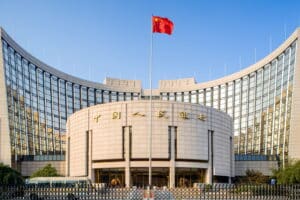Nigeria stands at a crossroads. Our economy, shackled to a colonial model of raw material exports, hemorrhages value while others profit from our resources. In 2023, non-oil exports generated just $4.8 billion, with raw commodities like cocoa, cashew, and sesame accounting for 80%. These goods, when processed, command up to five times the price, yet Nigeria processes less than 10% of its cocoa and 20% of its cashew.
The Raw Materials Research and Development Council (RMRDC) Bill, now before the National Assembly, mandates 30% local value addition for exports and restricts the importation of raw materials that are available locally. This is not a minor adjustment — it is a transformative leap toward industrialization, job creation, and economic sovereignty.
Escaping the Colonial Trap
Nigeria’s export model is a colonial relic. Crude oil still dominates, while non-oil commodities stagnate at low global prices. For instance, Nigeria exported 280,000 tons of cocoa in 2023 at about $1,000 per ton, generating $1.1 billion. However, processed cocoa — chocolate, butter, powder — sells for up to $5,000 per ton. Côte d’Ivoire, by processing 33% of its cocoa, earns over $3.8 billion from exports.
Cashew offers a similar story. Of Nigeria’s 250,000 tons produced annually, less than 20% is processed locally. India and Vietnam, by dominating the processing stage, reap massive benefits from the global $6 billion cashew market. This is not by accident — it is a direct result of underinvestment and policy failure.
Africa contributes only 3% to global manufacturing despite hosting 15% of the world’s population. Nigeria’s failure to process its $20 billion agricultural output keeps us at the mercy of commodity price shocks. In 2024, cocoa prices dropped by 20%, costing Nigeria $200 million. The RMRDC Bill would address this structural failure, adding $2-3 billion annually to our export earnings and creating up to 150,000 jobs.
Trump’s tariffs and the urgency of action
The 2025 global trade landscape makes the bill urgent. New reciprocal tariffs, like the 14% duty on Nigerian goods imposed by the U.S., target unprocessed exports the hardest. Processed goods, however, enjoy significantly lower tariffs under international agreements. In Germany, for instance, processed cocoa imports face tariffs as low as 5%, while raw beans attract higher duties.
If Nigeria processes just 30% of its cocoa output, we could unlock an additional $1 billion annually. Processing half of our cashew crop could add another $600 million. These projections make the 30% mandate not just feasible but necessary.
Moreover, the bill aligns Nigeria with the African Continental Free Trade Area (AfCFTA). Intra-African trade is expected to increase by over 50% by 2030, and processed goods command higher prices within the African market. Ethiopia’s textile boom and Rwanda’s coffee sector prove that value addition drives export growth under AfCFTA.
Creating a processing ecosystem
Skeptics argue that Nigeria lacks sufficient processing capacity. That is precisely why the RMRDC Bill matters — it will serve as the catalyst for industrial investment. Without a legislative push, private actors will continue to export raw commodities without adding value.
Look at Malaysia’s palm oil sector. The country processes 90% of its palm oil locally and earns over $20 billion annually. Indonesia banned raw nickel exports in 2014, resulting in $14 billion worth of local smelting investment and 200,000 new jobs. Nigeria can do the same.
A $500 million investment in 10 processing plants for cocoa and cashew could handle over 100,000 tons annually, injecting $1.5 billion into GDP. Every $1 invested in agro-processing yields $2.50 in economic growth. These are not theories — they are proven multipliers.
Additionally, the bill’s restrictions on importing raw materials that Nigeria can produce domestically aim to correct another market distortion. In 2023, Nigeria spent over $2 billion importing wheat and chemicals. By enforcing domestic sourcing, we can save $2-3 billion in foreign exchange annually.
Implementation with technocratic precision
There are concerns that the 30% value addition target lacks a clear implementation pathway. But policy design is iterative. Strategic direction comes from legislation, while execution is refined through guidelines and frameworks. The value addition standard can be clearly defined using benchmarks from the World Trade Organization.
Technology can support transparency. Blockchain certification platforms, for instance, can verify local processing levels and ensure traceability. Nigeria’s ports are already 95% digitized. A $5 million investment in a processing compliance tracking platform can further reduce fraud.
A phased rollout over five to seven years would allow industry players to adapt. Start with cocoa and cashew — two high-potential sectors with relatively established value chains. Meanwhile, $10 million in feasibility studies should map current processing capacity and identify gaps.
Corruption is always a concern, but this bill presents an opportunity to modernize governance. By using digital approvals, third-party audits, and defined performance metrics, Nigeria can mirror Brazil’s industrial councils, which manage similar mandates with over 95% compliance.
RMRDC’s role is strategic, Not overreach
Some argue that the RMRDC is stepping beyond its jurisdiction. But the Council’s original mandate — dating back to 1987 — is to promote the industrial utilization of Nigeria’s raw materials. Trade and industrial policy are interconnected. You cannot promote one without reinforcing the other.
The RMRDC works in concert with the Ministry of Industry, the Nigeria Export Promotion Council, and the Presidency to ensure harmonized policy action. Countries like Chile have successfully implemented copper processing mandates under similar agency-led frameworks, with significant GDP growth to show for it.
Structural constraints: real but surmountable
Critics also cite Nigeria’s high energy, logistics, and financing costs. These are real challenges. Electricity in Nigeria costs nearly three times as much as in India. Rural transport can consume 30% of the final product’s value. Interest rates often exceed 20%.
But the bill is not blind to these realities — it provides the leverage needed to unlock infrastructure reform. For instance, a $2 billion rural road improvement initiative could slash transport costs by 20%. One hundred solar-powered mini-plants — costing $1 million each — could process 500,000 tons of produce near source. A $1 billion credit fund with a 5% interest ceiling could catalyze processing capacity, much like Ethiopia’s textile funding initiative did.
The heavy cost of inaction
Inaction is not neutral — it is catastrophic. Nigeria’s youth unemployment rate hovers around 40%. Without local processing, our economy remains incapable of absorbing the country’s massive labor force. This fuels migration, crime, and socio-political instability.
Over the past two decades, more than half of Nigeria’s agro-processing firms have collapsed — not for lack of raw materials, but due to policy neglect and lack of support. Commodity price volatility adds to the pain. Between tariffs from the U.S., industrial taxes from China, and EU carbon border adjustments, Nigeria could lose up to $500 million in annual revenue by 2027.
Meanwhile, foreign processors continue to earn $5 billion annually from Nigerian raw materials. The irony is glaring: we produce, others profit. The RMRDC Bill is our opportunity to change that equation.
A new industrial playbook
This bill is more than legislation — it is a blueprint for national transformation. If passed and implemented properly, it could add $5 billion to GDP by 2030, create 150,000 new jobs, and reduce our import bills by at least $2 billion.
It fits squarely into the African Union’s Agenda 2063, which sees value chain development as the backbone of Africa’s industrial resurgence. Nigeria, with its massive domestic market and agricultural output, is uniquely positioned to lead this transformation.
The National Assembly must act. Policymakers should commission feasibility studies, define the 30% processing threshold with precision, and provide incentive packages including loans, infrastructure, and power subsidies. The private sector must step up with at least $5 billion in investment into factories, machinery, and logistics.
Civil society must also hold government accountable for the rollout. Farmers, cooperatives, youth groups, and professional associations must take ownership of this agenda.
Conclusion: The choice before us
In 2025, Nigeria must choose. Will we remain a nation exporting raw potential while importing poverty? Or will we rise to become a processing powerhouse, where cocoa becomes chocolate, cotton becomes fabric, and palm oil becomes packaged products?
The RMRDC Bill is a powerful tool — a legislative catalyst to unlock industrial prosperity. It responds to global trade disruptions, regional trade opportunities, and our long-standing economic vulnerabilities.
Let us pass this bill, implement it with precision, and build the Nigeria we deserve.
Industrialize or perish. Nigeria’s destiny is in our hands.



